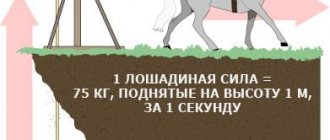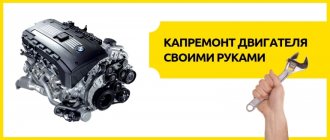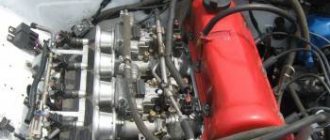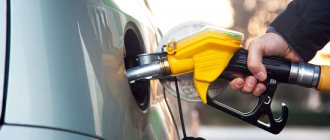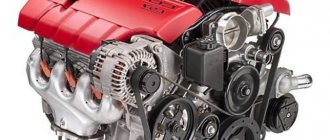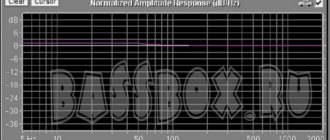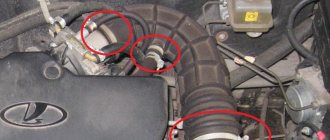Someone needs to calculate the power of the engine unit in order to calculate the car tax. For some, it is important to independently calculate the power of the compressor engine. For some, it is important to know exactly the power of the machine in order to compare it with the one that was declared. In general, power calculation and engine selection are two inseparable processes.
These are not the only reasons why car enthusiasts try to independently calculate the engine power of their cars. This is quite difficult to do without the necessary formulas for calculation. They will be presented in this article so that every motorist can calculate for himself how much the real engine power of his car is.
Introduction
There are at least four common ways to calculate the power of an internal combustion engine. These methods use the following parameters of the propulsion unit:
- Revolutions.
- Volume.
- Torque.
- Effective pressure inside the combustion chamber.
For calculations, you need to know the weight of the car, as well as the acceleration time to 100 km/h.
Each of the following formulas for calculating engine power has some error and cannot give a 100% accurate result. This should always be taken into account when analyzing the data obtained.
If you calculate the power using all the formulas that will be described in the article, you can find out the average value of the actual engine power, and the discrepancy with the actual result will be no more than 10%.
If we do not take into account various scientific subtleties associated with the definition of technical concepts, we can say that power is the energy generated by the motor unit and converted into torque on the shaft. In this case, power is not a constant quantity, and its maximum value is achieved at a certain shaft rotation speed (indicated in the passport data).
In modern internal combustion engines, maximum power is achieved at 5.5-6.6 thousand revolutions per minute. It is observed at the highest average effective pressure in the cylinders. The magnitude of this pressure depends on the following parameters:
- quality of the fuel mixture;
- combustion completeness;
- fuel losses.
Power, as a physical quantity, is measured in Watts, and in the automotive industry it is measured in horsepower. The calculations described in the methods below will give results in kilowatts, then they will need to be converted to horsepower using a special converter calculator.
Calculation of injector performance
Injectors are spray parts that supply fuel to the cylinders of the internal combustion engine. The nature of the injectors’ operation directly affects the engine’s operating format, so the engine power can be calculated based on the performance of the injectors.
The following complex formula is used for calculations:
M = (PF x CF x SC)/(CT x TD)
- PF is the performance of 1 injector. This parameter is usually indicated in the technical documentation for the engine (although in the case of a new car, this information can be found from the on-board computer).
- KF is the number of injectors. This parameter can also be found from the technical documentation or using the on-board computer.
- KZ - injector load factor. For most passenger cars this parameter is equal to 0,75-0,8.
- TT - type of fuel mixture. For highly purified gasoline, this coefficient is usually 12-13.
- TD is a type of engine. For an atmospheric engine this parameter is 0.4-0.5, for a turbo engine - 0.6-0.7.
This calculation method is quite inaccurate, since the formula contains many correction factors, many of which do not have an exact digital expression. Therefore, the real power may differ from the formula power by 10-15% (however, this is a small error).
Power via torque
One way to calculate power is to determine the dependence of motor torque on the number of revolutions.
Any moment in physics is the product of a force and the shoulder of its application. Torque is the product of the force that the engine can develop to overcome the resistance of the load and the shoulder of its application. It is this parameter that determines how quickly the motor reaches its maximum power.
Torque can be defined as the ratio of the product of the working volume and the average effective pressure in the combustion chamber to 0.12566 (constant):
- M = (Vworking * Peffective)/0.12566, where Vworking is the working volume of the engine [l], Peffective is the effective pressure in the combustion chamber [bar].
Engine speed characterizes the speed of rotation of the crankshaft.
Using the values of torque and engine speed, you can use the following formula to calculate engine power:
- P = (M * n)/9549, where M – torque [Nm], n – shaft rotation speed [rpm], 9549 – proportionality coefficient.
The calculated power is measured in kilowatts. To convert the calculated value into horsepower, you need to multiply the result by a proportionality coefficient of 1.36.
This method of calculation consists of using only two elementary formulas, therefore it is considered one of the simplest. True, you can do it even simpler and use an online calculator, into which you need to enter certain data about the car and its engine unit.
It is worth noting that this formula for calculating engine power allows you to calculate only the power that is obtained at the output of the engine, and not that which actually reaches the wheels of the car. What is the difference? While the power (if you imagine it as a flow) reaches the wheels, it experiences losses in the transfer case, for example. Secondary consumers such as an air conditioner or generator also play a significant role. It is impossible not to mention the losses due to overcoming resistance to lifting, rolling, and aerodynamic resistance.
This disadvantage is partially compensated by the use of other calculation formulas.
On-site vehicle diagnostics
The service has come into use recently, but has managed to spread widely and attract a huge number of specialists. Today, anyone can order a car inspection at home; it’s practically the same as a car service, only specialists come to you, and not you to them.
As a rule, the inspection is carried out by automobile experts who work either as mechanics in a car service center or as specialists in the sale of used cars. With a trained eye, they will determine the condition of the car, conduct diagnostics through the on-board computer and tell you exactly what this car has experienced in the past, and what you should be wary of in the future.
The advantage over the service is that you do not need to go anywhere, and the check will be carried out faster, however, the weakness of field specialists remains the lack of complex equipment present in car services, such as a lift. However, if you have a garage with a pit, this problem is leveled out.
- Specialists will come to you with a set of necessary equipment and inspect the car. The work takes from 40 minutes to one hour.
- As a rule, on-site diagnostic specialists have carried out a similar procedure many times already, and with a trained eye they can quickly and accurately determine what exactly is wrong with the car. The quality of diagnostics and the “verdict” of field experts are usually very accurate.
- Experts in car selection also negotiate with the seller for you, and you can “bring down” the price of a car you are interested in in good condition. Despite the fact that the price for such services is high, it is usually less than the amount that car selectors manage to negotiate for, and as a result, everyone benefits.
- Lack of some professional equipment present in the car service.
- There is a risk of encountering amateurs who incorrectly assess the condition of the car.
Power via engine displacement
It is not always possible to determine the engine torque. Sometimes car owners do not even know the meaning of this parameter. In this case, the power of the engine unit can be determined using the engine volume.
To do this, you will need to multiply the volume of the unit by the crankshaft speed, as well as by the average effective pressure. The resulting value must be divided by 120:
- P = (V * n * Peffective)/120 where V – engine volume [cm3], n – crankshaft rotation speed [rpm], Peffective – average effective pressure [MPA], 120 – constant, proportionality coefficient.
This is how the power of a car engine is calculated using the volume of the unit.
Most often, the Peffective value in standard gasoline engines varies from 0.82 MPa to 0.85 MPa, in forced engines - 0.9 MPa, and in diesel units the pressure value ranges from 0.9 MPa to 2.5 MPa.
When using this formula to calculate the actual power of the motor, to convert kW to hp. s., it is necessary to divide the resulting value by a coefficient equal to 0.735.
This calculation method is also far from the most complicated and takes a minimum of time and effort.
Using this method, you can calculate the power of the pump motor.
Counting the “horses”: folk cars on the power stand
How different are the official specifications from the real ones? We have already tested cars from the border tax-favorable category of up to 250 hp for guile. The results turned out to be different: some honestly delivered the declared power, while others fell somewhat short. But it’s one thing to have fairly powerful cars, which in any case do not suffer from a lack of traction, and quite another to be popular cars.
So we checked simpler cars. Since they have less strength, the loss of each “horse” becomes very noticeable. The same goes for torque.
So, here is our test five. In the budget segment are the Lada XRAY Cross and its competitor relative, the Renault Logan Stepway. In the golf class - the third generation Kia Ceed, which is gaining momentum. One of the leaders in the crossover camp, the updated Nissan X‑Trail, also caught our attention.
The Chinese crossover Haval H6 is not the most popular on the Russian market among its classmates, but it is quite fresh. The real power of the “Chinese”, especially with turbocharging, is gossiped about in every garage. Let's check it out!
Power via air flow
The power of the unit can also be determined by air flow. True, this calculation method is available only to those car owners who have an on-board computer installed, which allows them to record air consumption at 5.5 thousand revolutions in third gear.
To obtain the approximate engine power, it is necessary to divide the flow rate obtained under the conditions described above by three. The formula looks like this:
- P = G/3, where G is air flow.
This calculation characterizes engine operation under ideal conditions, that is, without taking into account losses on the transmission, third-party consumers and aerodynamic resistance. The actual power is 10 or even 20% lower than calculated.
Accordingly, the amount of air flow is determined in laboratory conditions on a special stand on which the car is installed.
The readings of on-board sensors are highly dependent on their contamination and calibration.
Therefore, calculating engine power based on air flow data is far from the most accurate and efficient, but it is quite suitable for obtaining approximate data.
Power through the mass of the car and acceleration time to “hundreds”
Calculation using the weight of the car and its acceleration speed to 100 km/h is one of the simplest methods for calculating the real engine power, because the weight of the car and the stated acceleration time to “hundreds” are the vehicle’s passport parameters.
This method is relevant for engines running on any type of fuel - gasoline, diesel fuel, gas - because it only takes into account the dynamics of acceleration.
When calculating, it is worth taking into account the weight of the vehicle along with the driver. Also, in order to bring the calculation result as close as possible to the actual one, it is worth taking into account the losses spent on braking, slipping, as well as the reaction speed of the gearbox. The type of drive also plays a role. For example, front-wheel drive cars lose about 0.5 seconds at the start, rear-wheel drive cars lose from 0.3 to 0.4 seconds.
All that remains is to find a calculator on the Internet to calculate the power of a car through acceleration speed, enter the necessary data and get an answer. There is no point in presenting the mathematical calculations that the calculator makes because of their complexity.
The result of the calculations will be one of the most accurate, close to the real one.
This method of calculating the real power of a car is considered by many to be the most convenient, because car owners will have to make a minimum of effort - to measure the acceleration speed of up to 100 km/h for the purity of the experiment and enter additional data into an automatic calculator.
The scattered herd
We carry out measurements together with our good friends from the AGP Motorsport workshop - on a modern Dynomax 5000 AWD dynamometer with running drums, which is designed for any type of drive. Before driving the cars onto the drums, a few words about the test methodology.
Now all manufacturers measure power at the engine flywheel with all auxiliary equipment. Naturally, we cannot remove the engine from every car. It is clear that the bench power “from the wheels” when accelerating in direct gear from 1500–2000 rpm to maximum speed will be significantly less than the net power at the flywheel. Because transmission losses are inevitable. That is why any modern stand can recalculate the results taking into account all losses.
Another coefficient automatically applied by the stand concerns test conditions. According to UNECE rules No. 85 and ISO 1585, the ambient temperature should be +25 °C, atmospheric pressure - 99 kPa.
However, the stand still gives an error that does not exceed 5%. As our experience shows, this error is always not in favor of the motorist. But if the obtained data fits into these percentages, we consider that the engine power and torque are indicated honestly.
To confirm the results of the stand, we will also measure the dynamics, that is, the acceleration time from standstill to 100 km/h.
NET AND GROSS
How is engine power measured when compiling technical data for a new car? Once upon a time, manufacturers operated with gross power, or so-called laboratory power, which was removed from the engine without attachments. It is clear that in this case the indicators are higher, but these data have nothing to do with the real return on wheels. Therefore, such measurements were gradually abandoned in favor of net power measured at the engine flywheel with all auxiliary equipment.
Other engine types
It is no secret that engines are used not only in cars, but also in industry and even in everyday life. Motors of different sizes can be found in factories - driving shafts - and also in household appliances such as automatic meat grinders.
Sometimes it is necessary to calculate the real power of such engines. How to do this is described below.
It is worth immediately noting that the power of a 3-phase motor can be calculated as follows:
- P = Mtorque * n, where Mtorque is the torque and n is the shaft rotation speed.
How much horsepower does a horse have?
Photo: Shutterstock For a short time, this animal can develop power of up to 13 horsepower, but during normal rhythmic work it is just about one.
Interesting materials:
How to remove duplicate photos? How to remove duplicate contacts in Viber? How to remove duplicates in CCleaner? How to remove Duo Xiaomi? How to remove double-sided tape from a car? How to remove double-sided tape from a wooden surface? How to remove double-sided tape from linoleum? How to remove double-sided tape from furniture? How to remove double-sided tape from car plastic? How to remove double-sided tape from window plastic?
Asynchronous motor
An asynchronous unit is a device whose peculiarity is that the rotational speed of the magnetic field created by its stator is always greater than the rotational speed of its rotor.
The operating principle of an asynchronous machine is similar to the operating principle of a transformer. The laws of electromagnetic induction are applied (the time-varying flux linkage of the winding induces an EMF in it) and Ampere (an electromagnetic force acts on a conductor of a certain length through which a current flows in a field with a certain induction value).
An asynchronous motor generally consists of a stator, rotor, shaft and support. The stator includes the following main components: winding, core, housing. The rotor consists of a core and a winding.
The main task of an asynchronous motor is to convert electrical energy, which is supplied to the stator winding, into mechanical energy, which can be removed from the rotating shaft.
Asynchronous motor power
In the technical field of science, there are three types of power:
- full (denoted by the letter S);
- active (denoted by the letter P);
- reactive (denoted by the letter Q).
The total power can be represented as a vector that has a real and an imaginary part (it is worth recalling the section of mathematics associated with complex numbers).
The real part represents the active power, which is expended to perform useful work such as rotating a shaft, as well as to generate heat.
The imaginary part is expressed by reactive power, which takes part in the creation of magnetic flux (denoted by the letter F).
It is the magnetic flux that underlies the operating principle of an asynchronous unit, a synchronous motor, a DC machine, and a transformer.
Reactive power is used to charge capacitors, creating a magnetic field around the chokes.
Active power is calculated as the product of current with voltage and power factor:
- P = I * U * cosφ.
Reactive power is calculated as the product of current with voltage and power factor, phase shifted by 90°. Otherwise you can write:
- Q = I * U * sinφ.
The value of the total power, if we remember that it can be represented as a vector, can be calculated using the Pythagorean theorem as the root of the sum of the squares of active and reactive power:
- S = (P2+Q2)1/2.
If we calculate the formula for total power in general form, it turns out that S is the product of current and voltage:
- S = I * U.
Power factor cosφ is a value numerically equal to the ratio of the active component to the total power. To find sinφ, knowing cosφ, you need to calculate the value of φ in degrees and find its sine.
This is a standard calculation of motor power by current and voltage.
Calculation of the power of a 3-phase asynchronous unit
To calculate the net power on the stator winding of an asynchronous 3-phase motor, you should multiply the phase voltage by the phase current and by the power factor, and multiply the resulting power value by three (by the number of phases):
- Pstator = 3 * Uph * Iph * cosφ.
Electric power calculation engine, which is active in nature, that is, the power that is removed from the engine shaft is produced as follows:
- Poutput = Pstator – Ploss.
The following losses occur in an asynchronous motor:
- electrical in the stator winding;
- in the steel of the stator core;
- electrical in the rotor winding;
- mechanical;
- additional.
To calculate the power of a three-phase motor in the stator winding, which is reactive in nature, it is necessary to add up three components of this type of power, namely:
- reactive power consumed to create stator winding leakage flux;
- reactive power consumed to create leakage flux in the rotor winding;
- reactive power consumed to create the main flow.
Reactive power in an asynchronous motor is mainly spent on creating an alternating electromagnetic field, but part of the power is spent on creating leakage fluxes. Leakage fluxes weaken the main magnetic flux and reduce the efficiency of the asynchronous unit.
Power by current
Calculation of the power of an asynchronous motor can be done using current data. To do this, follow these steps:
- Apply power to the engine.
- Using an ammeter, measure the current in each turn.
- Calculate the average current value based on the measurements performed in the second paragraph.
- Multiply the average current by the voltage. You will get power.
Power can always be calculated as the product of current and voltage. In this case, it is important to know which values of U and I should be taken. In this case, U is the supply voltage, it is a constant value, and I can vary depending on which winding (stator or rotor) the current is measured, so it is necessary to select its average value.
Checking at a car service center
A surefire way to learn everything about a car and its engine if you don't consider yourself a good expert to inspect it yourself. For a reasonable fee, service specialists will inspect the car completely, consider it a computer (if the car has a diagnostic connector), check all the technical components of the car and even find out whether there has been interference in the memory of the on-board computer, whether the mileage has been changed through it and whether errors have been erased.
It is better to contact either official dealers or specialized centers that work with one brand of car, or with a narrow range of car brands. As a rule, such services know better all the typical “sores” of cars and are very well versed in the engines presented on the brand’s models.
In this case, you only need to choose a service that has a large number of positive reviews and a long history of work, pay for the service and wait until the diagnostics are completed, after which you will be given a work order. Whether you buy a car after that and pay for spare parts and repairs, or hand over the document to the seller and refuse to buy the car, is up to you. This method of checking a car engine is very effective and, as a rule, error-free - if the car is faulty or requires significant investment, specialists will report this based on the diagnostic results.
Advantages of using a car service:
- You will know for sure all the ins and outs of the car and its components: they will tell you whether the car’s mileage was low, whether there were any accidents, what exactly needs to be replaced or repaired at a given time, etc.
- They will issue an order on the spot and tell you where to purchase spare parts and consumables. If you purchase a car right on the spot, you can begin to work on fixing problems without going anywhere.
Disadvantages of working with a car dealership:
- It is necessary to pay for the services of a specialized service; prices vary depending on the region and the qualifications of the servicemen. On average, for services specializing in foreign cars, one standard hour is estimated at 900 to 2000 rubles, diagnostics last an hour and a half, these costs are borne by the potential buyer.
- You will have to spend time on the road to the service, diagnosing the car and then on the way home, you also need to agree on a time that is convenient for all parties: you, the seller and the car service center. Due to the complexity of the organization, the process can take weeks.
- If you choose an inexpensive service “behind garages,” there is a risk that the diagnostics will not be carried out efficiently, which will result in additional expenses for you after purchasing the car.
If you have enough time and are willing to spend several thousand rubles to definitely avoid mistakes, then the service is your option. But be careful when choosing the service itself; saving here is not the best way; it is better to spend more money on the services of high-level specialists.
Power by size
The stator has many different components, one of which is the core. To calculate engine power using dimensions, follow these steps:
- Measure the length and diameter of the core.
- Calculate the constant C, which will be used in further calculations. C = (π * D * n)/(120 * f), where D is the core diameter, n is the shaft rotation speed, f is the voltage frequency (most often this is the industrial frequency of 50 Hz).
- Calculate the power P using the formula P = C * D2 * l * n * 10-6, where C is the calculated constant, D is the diameter of the core, n is the shaft rotation speed, l is the length of the core.
It is better to carry out all measurements and calculations with maximum accuracy so that the calculation of the power of the electric drive motor is as close to reality as possible.

